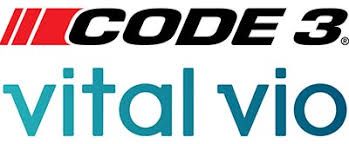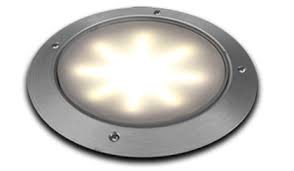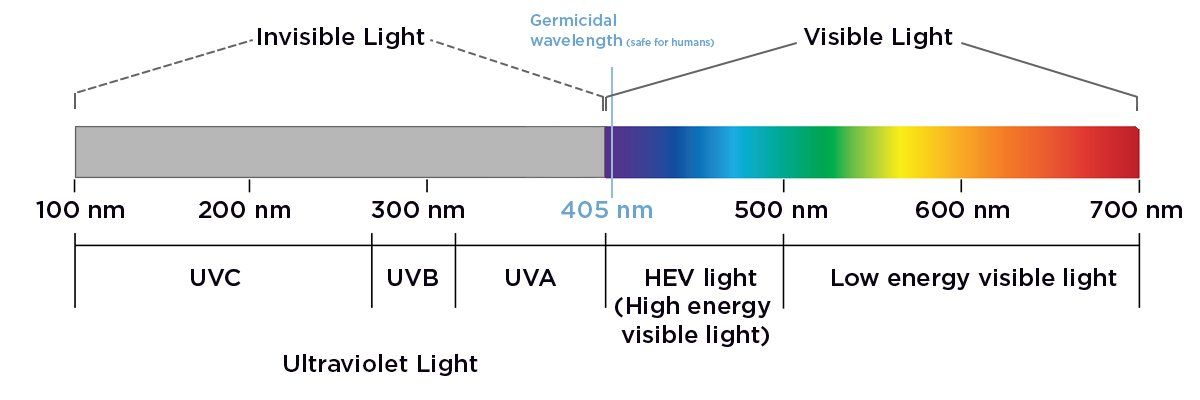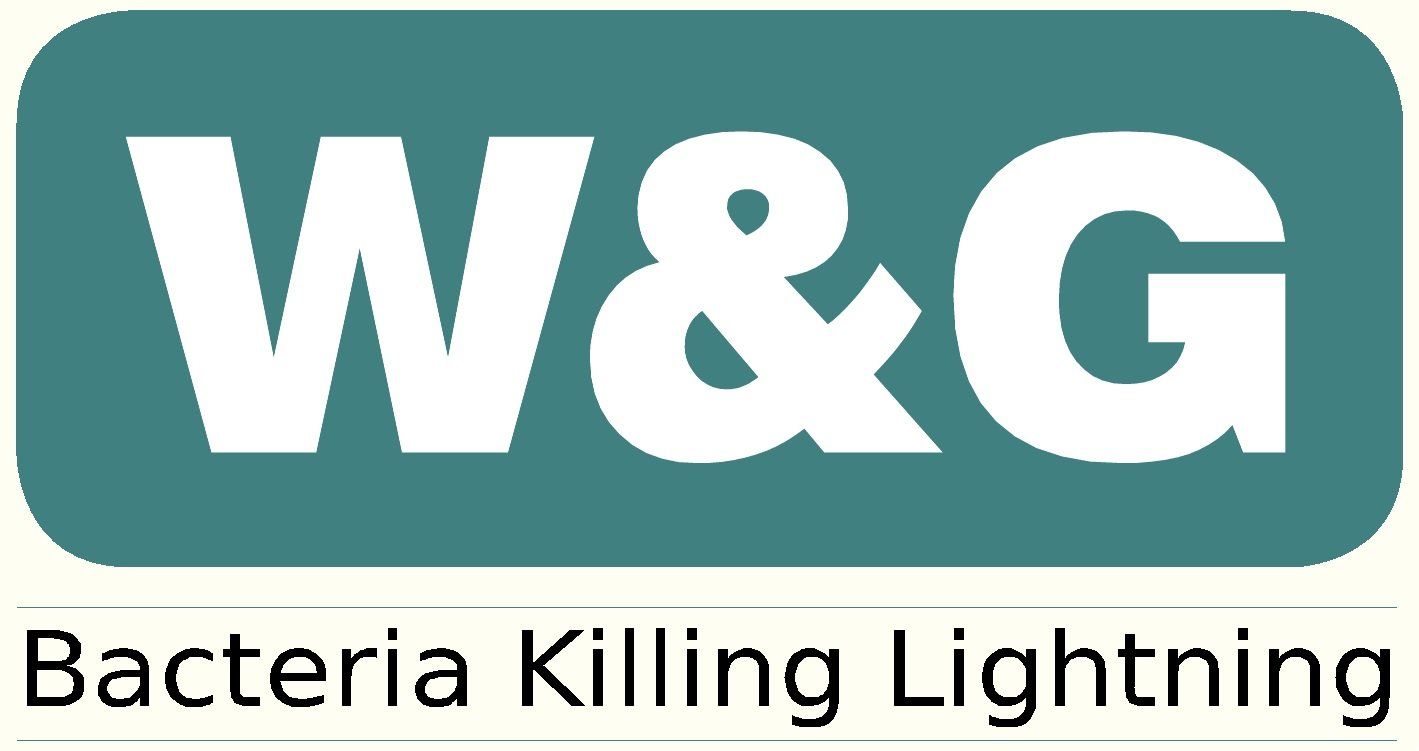A. How quickly does this technology work ?
As soon as bacteria are exposed to the light, the deadly reaction within the cells begins
VioSafe® White Light Disinfection® begins working instantly. Different types and strains of bacteria, mold and fungi are all killed at different rates.
Instead of thinking about your disinfection procedures in terms of, “How fast,” consider asking, “How long does it work?” Here’s why: clean and disinfect a surface. Now, touch your hand to it. Bacteria are deposited. Touch it again, more bacteria. Wait some time and airborne bacteria land on it, too. Once on the surface, these bacteria are free to multiply and spread, over and over, until the next time you come back to clean. That’s the nature of “intermittent cleaning procedures.”
Now imagine that surface is illuminated with VioSafe® Disinfection technology. You’re still cleaning intermittently. But between cleanings, the bacteria load on the surface is a fraction of what it would otherwise be because the VioSafe® technology is continuously killing the bacteria that is redeposited. Continuous disinfection isn’t the same as intermittent disinfection; it’s an important, long-lasting addition to best-practices in infection control.
1. How do we know that this technology is safe?
Disinfecting with light is not a new practice. The more commonly recognized light disinfection method, Ultra Violet (UV), utilizes the 250 nm wavelengths to cause photodegradation of DNA, which results in cell death. Unfortunately, this type of disinfection is also harmful to humans, as well as many inorganic materials. Exposure to those wavelengths can severely damage our skin and eyes, so any UV disinfection must be done when the space is unoccupied—which reduces its usefulness in certain situations.
2. So how is this different from UV disinfection?
Unlike UV light, 400-405nm wavelengths do not have the same impact on mammalian cells as they do on bacterial cells. Mammal and bacteria cells both have porphyrin molecules, but mammalian cells have more sophisticated methods for coping with oxidative damage compared to bacteria cells, which are more primitive. Human cells can be exposed to 405 nm light with no loss of cell viability. Vital Vio’s technology and products have been tested for continuous and unrestricted use around humans and are internationally certified by the IEC (IEC 62471).
3. What about other disinfection methods?
Compared to intermittent cleaning methods that require everyone to leave, like hydrogen peroxide fogging or pulsed UVC, these luminaires don't interrupt the daily functions of the space.
That’s not to say that intermittent cleaning methods are a bad idea. On the contrary, the best way to use VioSafe® is in combination with traditional cleaning methods. That way, Vital Vio’s technology can protect surfaces over time while other methods can kill germs immediately following contamination events. In addition, bacteria with damaged cells from regular disinfectant use are actually more vulnerable to 405nm exposure and can be eliminated faster; so, if bleach wiping doesn't totally kill a bacterium, the light will take care of it.
4. Doesn't 405nm light count as blue light, which may have a negative impact on circadian rhythm?
Visible light disinfection requires a significant portion of the spectral power distribution in the 400-410nm range. However, this peak is at shorter wavelengths than the peak of a typical blue-pumped phosphor-converted white LED source.
The LRC has stated that CS values exceeding 0.3 are needed to elicit a circadian response within a reasonable time frame. A standard 4000K 80CRI LED will have a CS value of 0.090 per the LRC's Circadian Stimulus metric. In comparison, the visible White Light Disinfection® spectrum used in our products has a CS value of 0.121, which is only marginally more circadian affective than the standard 4000K source. Neither sources would elicit a circadian response except at very high pupil illuminances.
The high-efficiency disinfecting source (HDS), the purple source option, offered in some of our 110/230 VAC products would have a CS value of 0.494 at the same pupil illuminance, but generating that from an installed general lighting product would be extremely difficult. Our recommended target illuminance for equivalent disinfecting action with the purple source is around 20-30 lux horizontal (compared to our recommended 300-500 lux horizontal from the White Light Disinfection® source). Since the purple source is not intended for use while the space is occupied (because of occupant comfort under a purple light, not because of safety concerns), its use for circadian lighting is not recommended nor intended.
Visible light versus invisible light
How it kills and what it kills
5. What can light fixtures powered by Vital Vio kill?
Because this process involves using particular wavelengths that cause harmful microorganisms to die, Vital Vio’s technology is effective against several dangerous bacteria. The list below showcases just the species that this technology has already been proven to kill—there are even more to be tested. These include gram negative and gram positive bacteria, bacterial endospores, yeast, mold and fungi:
Gram positive
Staphylococcus aureus (incl. MRSA)
Clostridium perfringens
Clostridium difficile (commonly called C. diff, a bacterial endospore)
Enterococcus faecalis
Staphylococcus epidermidis
Staphyloccocus hyicus
Streptococcus pyogenes
Listeria monocytogenes
Bacillus cereus (a bacterial endospore)
Mycobacterium terrae
Bacillus circulans
Streptococcus thermophiles
Gram negative
Acinetobacter baumannii
Pseudomonas aeruginosa
Klebsiella pneumoniae
Proteus vulgaris
Escherichia coli
Salmonella enteritidis
Shigella sonnei
Serratia spp.
Salmonella typhimurium
Bacterial Endospores
Bacillus cereus
Clostridium difficile
Yeast and Filamentous Fungi
Aspergillus niger
Candida albicans
Saccharomyces cerevisiae
6. What about superbugs? How does this technology impact antibiotic-resistant bacteria?
Antibiotics and visible light disinfection work in very different ways, with antibiotics affecting a single “target” and visible light disinfection affecting multiple “targets” within a microorganism. Microbes have proven effective at mutating to resist a single target, but not multiple targets.
Antibiotics operate by targeting a singular molecule or function within a cell: a component of either DNA synthesis, cell wall synthesis, or protein synthesis. Bacteria are then able to generate one of four resistance mechanisms: antibiotic inactivation, target modification, altered permeability, or the bypass of that part of the metabolic pathway (Kapoor, G., Saigal, S., & Elongavan, A. 2017. “Action and resistance mechanisms of antibiotics: A guide for clinicians.” J of anaesthesiol Clin Pharmacol. 33.3: 300-305). These mechanisms become effective because resistance is needed against only the single target within the cell.
By contrast, visible light disinfection technology disinfects through the photoactivation of the ubiquitous and critical porphyrin molecules, which then produce reactive oxygen species (ROS). These ROS cause irreparable damage intracellularly by affecting numerous targets simultaneously, including DNA, RNA, proteins, and lipids (Cabiscol E, J Tamarit, and J Ros. 2000. “Oxidative stress in bacteria and protein damage by reactive oxygen species.” Internatl Microbiol. 3:3-8). This mechanism is different from the inactivation mechanisms characteristic of antibiotic treatment or long-wave UV (as used in the study you linked in your question). It would be very difficult for microbes to produce enough mutations that did not kill the cell to result in resistance.
7. Does Vital Vio’s technology also disinfect naturally occurring, helpful bacteria in humans?
The 400-420nm wavelength that is effective at killing microbes does not distinguish between microbes that are pathogenic and those that are beneficial to humans. All species currently tested that are killed by visible light disinfection technology contain porphyrin molecules.
However, the majority of good bacteria resides in your gut, in hair follicles, or beneath layers of the skin—where light doesn’t hit. In addition, the majority of your skin surface is covered by clothing, so the amount of skin surface that would be exposed to overhead illumination would still be fairly small relative to your overall body, and any bacteria killed would naturally repopulate over time. This is very similar to the amount of bacteria killed while showering, washing hands, or using antibacterial gels.
In short, visible light disinfection does not significantly reduce the good bacteria within or on a human. Most environments do contain benign or helpful bacteria, and there is some minute impact to those species. You have to consider risk vs benefit when evaluating the disinfection needs of a particular environment. It's also important to note that visible light disinfection does not create a completely sterile environment, it works in tandem with regular cleaning methods to reduce bacteria population in a given space.
8. Would Code 3 Lighting fixtures with Vital Vio sources kill strep and stomach flu bacteria? Are they able to kill viruses?
Vital Vio hasn’t encountered a gram negative or gram positive bacteria that their sources do not kill. For example, MRSA is a form of staph bacteria that we know Vital Vio LEDs kill. The technology will not kill viruses of any kind, including influenza. Viruses typically transmit from human to human and don't live very long outside of their host. Bacteria, on the other hand, can live for days, weeks, or months on surfaces. That's really the focus of Vital Vio LEDs disinfection capability.
Salmonella bacterium
Listeria bacterium
Aspergillus niger
Symmetry disinfecting a workout facility
9. Are the sources in these fixtures dimmable?
Yes. (750 Lumen) and dimmode (250 Lumen)
10. Does dim or Eco highmode, require two switches to control the fixture?
Dim mode can be activated by one external switch.
11. Is the Vital Vio White Light Disinfection® source like any other standard white LED we would utilize from a Visa Lighting fixture?
On each product where a White Light Disinfection® source is offered, the standard white light LED source is also available. Luminaires with this disinfecting source can be used like any other white light fixture. However, these sources have the primary benefit of continuously disinfecting the space while providing illumination.
12. What is the life expectancy of the single disinfecting diode?
These diodes are constructed similarly to the typical white or saturated color LEDs that are common in the marketplace today—with a few differences and some special sauce from Vital Vio. The biggest difference is in the phosphor conversion, after the light is emitted by the pump inside the white light emitter.
Therefore, the lifetime and life expectancy of the light source, like a typical LED source, is dependent upon how much power is going into the emitter and how hot the emitter gets. We have designed these products to be supported by the Code3 five-year warranty, the same warranty that we have on our typical products.
13. In Eco Mode, can you choose the CCT or is it always one CCT combination?
(for AC versions only)
The only color available for the Eco mode is the saturated purple color, which is consistent with 405nm light.
14. Are there various color temperatures available for the white light disinfection? If not, what is the color temp provided?
Currently, the only color temperature that is available with the white light disinfection source is a 4100K, typically 86 CRI, source. That is the only color temperature that's currently available for the white light disinfection function. Vital Vio is discussing the possibilities for extending that color temperature outside of 4100K to warmer or cooler options.
15. Do the Vital Vio white light disinfection mode LEDs change or alter in color temperature?
With respect to color and appearance of illuminated objects inside of a room, the disinfecting white LED should not cause any change. The 405nm peak that's used by these products in combination with the phosphor conversion to white will not cause things to fluoresce. Vital Vio have done a lot of work to ensure that the White Light Disinfection® source does not cause other white items in the room to start fluorescing.
Referring to color shift in the emitters, the phosphor-converted white LEDs are subject to typical minor color shift over time due to a variety of factors inside the emitter, such as phosphor or casing. However, one thing that does not move over time is that disinfecting peak of irradiation from the emitters. That is a fundamental physical concept based on how the LED die are made based on the recipe, and that does not move over time.
Over an extremely long term, even if there is a very minor shift in color, (something that you can only measure with a machine, not something your eye could detect) the disinfecting power peak coming from those emitters will not move. You're not going to get a shift that discontinues the correct wavelengths and halts disinfection.
16. How does the saturation level of disinfection for HDS compare with the L40KD source? Can you quantify that?
Based on irradiance levels, the amount of the purple light that should be injected into a room to get a similar amount of disinfection power onto surfaces is approximately 1/10th of the amount of light compared to the disinfecting white light to get the same dose of disinfection irradiation.
17. Are areas under surfaces also disinfected with Vital Vio sources?
Yes, any place that your eyes can see is being illuminated, which means disinfection is occurring. If there is light reaching that surface, that means that the 405nm wavelength of light is reaching that surface. Though it hasn’t been tested, we know that reflected light or dim light is not going to have the same dosage. The amount of time needed to reduce the bacteria is much longer with less light hitting the surface. Of course, you wouldn't expect to see the same bacteria level on the underside of a surface or under a surface that you would expect to see on the surface.
18. How do we combat energy codes that require the lighting source to be turned off when the room is unoccupied?
(for AC versions only)
When it comes to the pure energy consumption, Eco Mode produces purple light—not a typical color for illumination. When considering just the purple Eco Mode output, we believe it shouldn't be part of the lighting power density calculation. In the White Light Disinfection® mode, approximately 71 percent of the power going into the fixture is actually being used to produce the white light. The other 29 percent of the power is producing that disinfecting component.
19. Is there a stipulation in the code which allows certain spaces to allow 24/7 lighting? Will they fall under a safety and security exemption?
(for AC versions only)
We're not familiar with every energy code throughout the United States, but in order to be in compliance, look at energy codes that require occupancy or vacancy switching. For example, consider using the White Light Disinfection® mode when the room is occupied, and then when the room becomes unoccupied switch on the Eco mode in order to give a boost of disinfecting power into the space. Or, continue to use the occupancy and vacancy sensors as normal, but use in conjunction with a time clock system. This would enable the fixtures to turn on in the Eco Mode for a brief period of time after the space becomes unoccupied at the end of the day.
20. How much light is needed to disinfect properly? How many fixtures do you need? What height is most effective?
There are two different illumination recommendations. The default illumination recommendation is roughly 500 lux, or 50 foot candles, for areas that see continuous reintroduction of new pathogens. This means spaces where lots of people move in and out, bringing new pathogens into the space on a very regular basis (for example: food processing facilities, schools, primary schools or daycares, locker rooms, health clubs, training facilities, active hospital rooms). In those areas, the target is 500 lux, or 50 foot candles.
A space that has a very intermittent introduction of pathogens, like a residential bathroom, or similar spaces that are only being used for a few minutes a day, the target is around 300 lux, or 30 foot candles.
The HDS option, (the purple Eco Modefor AC version only) has nearly 100 percent disinfecting power emitted from that product. The illuminance recommendation is approximately 3 to 3.5 foot candles because that function is much more efficient at delivering the disinfecting wave lengths.
21. At the recommended illuminances, how long does it take to be effective, and how fast does disinfecting work once the lights are on?
Those target illuminances are to achieve the results in the same timeframe that Vital Vio’s in-situ research studies have generated. Getting less than that will achieve the same effect, it just takes a little longer to get to a high level of reduction in colony counts. Slightly higher illuminances will see an accelerated decrease in colony counts. If foot candles are within those ranges, a statistically significant reduction in colony counts within weeks should be seen.
In a laboratory environment at the recommended illuminance levels, both the white light and the purple light disinfection sources approach a ninety percent reduction in colony counts within 24 hours. In a real-world application—which has variables like how long the lights are on per day, whether the lights are dimmed, and the level of pathogens introduced in the space on a regular basis, etc.,—we see statistically significant reductions in pathogen colony counts within a matter of weeks. That effect continues over time as the light sources retard additional development of pathogen colonies in the space as they are being reintroduced.
Again, this depends upon the geometry and use of the space. After initial introduction, continuing a reduction in colony counts as time progresses depends on both the continuous disinfection component and episodic cleaning.
22. Do you recommend the lights to be on constantly, or can they be off for a set period of time?
The longer the fixtures are on, the better, but bioburden reduction will still take place.
23. Can lights with Vital Vio be installed alongside normal lights?
Yes, they can be installed alongside normal products. Since the white light disinfection source from Vital Vio is currently only available in 4,100K, for cohesive design make sure any other light sources are also 4,100K.
In regards to disinfection, these illuminance recommendations are for light completely produced by the white light disinfecting source. For example, if you are lighting a room to 30 foot candles in general, but only one in four fixtures are using the white light disinfection source, pathogen colony counts will not decrease as rapidly as if you were lighting the entire space with the white light disinfection source. If using a product with the HDS option, the purple light source, they can be interspersed with other normal white light products.
24. When would you use the high-efficiency disinfection option (HDS) vs. the white light disinfecting source?
(for AC versions only)
The HDS option is generally intended to be used when the space is unoccupied. Although the Eco Mode is perfectly safe, it’s not normally used to illuminate the space for visual acuity due to the fairly high intensity purple light. We manufacture products, (such as the Jasper troffer and Cade downlight), that can be ordered with a standard or disinfecting white light source for typical illumination, with Eco mode sources as an option to provide a high intensity boost of disinfecting power once people have left the space.



